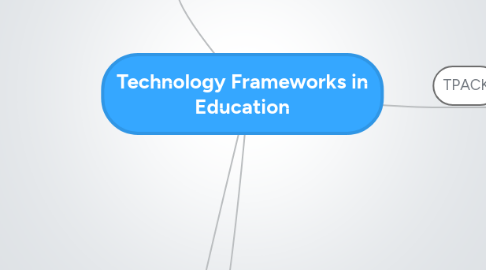
1. 21st Century Learner
1.1. Theory that the modern student has 9 dimensions of learning within 3 broad spectrums of knowledge
1.1.1. Foundational Knowlege
1.1.1.1. Content Knowledge
1.1.1.1.1. Knowledge related to a specific subject matter
1.1.1.2. Digital & Information Literacy
1.1.1.2.1. Knowledge about how to critically and effectively function in a technological world
1.1.1.3. Cross-Disciplinary Knowledge
1.1.1.3.1. Ability to integrate information across varying fields of study or in new contexts
1.1.2. Meta Knowledge
1.1.2.1. Problem Solving & Critical Thinking
1.1.2.1.1. The ability to interpret and evaluate information and make choices based on that evaluation
1.1.2.2. Communication & Collaboration
1.1.2.2.1. The ability to clearly convey one's thoughts through various modes of media
1.1.2.2.2. The ability to be a responsive, active listener
1.1.2.2.3. The ability to work with others towards a common vision or goal
1.1.2.3. Creativity
1.1.2.3.1. The ability to apply skills and knowledge to the generation of a new idea
1.1.3. Humanistic Knowledge
1.1.3.1. Life & Job Skills
1.1.3.1.1. The ability to manage and organize the components of one's life
1.1.3.1.2. The ability to effectively function in society
1.1.3.2. Cultural Competence
1.1.3.2.1. Appreciation and understanding of ideas, values, and attitudes of all individuals
1.1.3.3. Ethical/Emotional Awareness
1.1.3.3.1. The ability to sense the feelings of others and respond appropriately
1.1.3.3.2. The ability to sense ethical dilemmas or principles at stake in a situation and make an informed choice about the next course of action
2. SAMR
2.1. Evaluates the use of technology in the classroom and its effectiveness for student learning
2.1.1. Technological Enhancement
2.1.1.1. Technology acts as a direct substitute for traditional teaching
2.1.1.2. No grade improvement typically seen among students
2.1.1.3. Two levels within Technological Enhancement
2.1.1.3.1. Substitution
2.1.1.3.2. Augmentation
2.1.2. Technological Transformation
2.1.2.1. Technology is required for the task; the task cannot be completed without it
2.1.2.2. Two levels within Technological Transformation
2.1.2.2.1. Modification
2.1.2.2.2. Redefinition
3. Philosophy of Teachnology
3.1. Combines beliefs about teaching practices (Philosophy of Teaching) with beliefs about the use of technology in the classroom
3.1.1. ex: I believe that technology must be incorporated into the classroom so that we, as teachers, can adequately prepare our students for their work and personal lives in which they are likely to use technology (Life & Job Skills)
3.1.2. ex: I believe that teachers should directly teach the 9 facets of digital citizenship as presented in the ISTE National Educational Technology Standards document: Digital Citizenship - Addressing Appropriate Technology Behaviour, so that students are informed of their rights and responsibilities in the digital realm and how their actions can impact themselves and others
3.1.3. ex: I believe that teachers should actively use technology in order to improve the presentation of content and allow students to interact with the content of the classroom (TPK)
3.2. Should be informed by other technology frameworks such as TPACK, SAMR, and 21st Century Learning
4. TPACK
4.1. Describes the intersection of three forms of knowledge necessary for the modern classroom
4.1.1. Content
4.1.1.1. Knowledge related to the subject matter
4.1.1.1.1. Definitions
4.1.1.1.2. Current theories in the field
4.1.1.1.3. Procedures
4.1.1.2. Intersects with Pedagogical Knowledge to produce Pedagogical Content Knowledge
4.1.1.2.1. Knowledge of how to use teaching techniques for the specific content
4.1.1.3. Intersects with Technological Knowledge to produce Technological Content Knowledge
4.1.1.3.1. Knowledge of how technology can be used to maximize the teaching and learning of the specific content
4.1.2. Pedagogical
4.1.2.1. Knowledge related to teaching and learning
4.1.2.1.1. Classroom management
4.1.2.1.2. Differentiation for learner needs
4.1.2.1.3. Assessment
4.1.2.2. Intersects with Technological Knowledge to produce Technological Pedagogical Knowledge
4.1.2.2.1. Knowledge of how technology can improve teaching and learning methods
4.1.3. Technology
4.1.3.1. Knowledge related to the use of technology
4.1.3.1.1. How to install and use software
4.1.3.1.2. Current technological tools available and their functions
